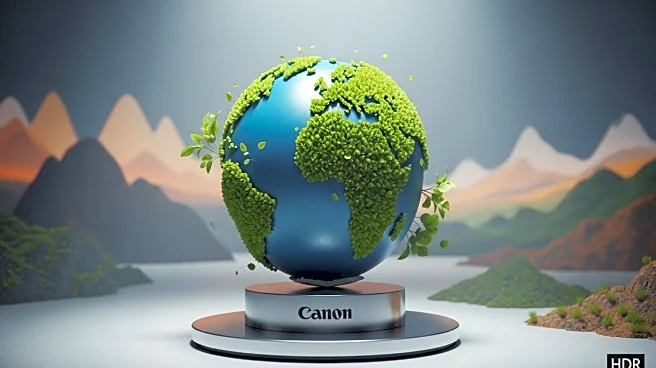What is the story about?
What's Happening?
A recent report from the United Nations' World Meteorological Organization highlights the healing of the Earth's ozone layer, particularly over the Antarctic. This positive development is attributed to international efforts to reduce the use of ozone-depleting substances, such as chlorofluorocarbons (CFCs). The report notes that the ozone layer is on track to recover to 1980s levels by the middle of the century, with complete recovery expected by 2040 over most of the world, 2045 in the Arctic, and 2066 in the Antarctic. The findings align with previous research from MIT, which demonstrated the direct effects of human actions on the ozone layer's recovery.
Why It's Important?
The healing of the ozone layer is a significant environmental achievement, showcasing the effectiveness of global cooperation in addressing climate issues. The reduction of harmful UV radiation due to the shrinking ozone hole decreases the risk of skin cancer, cataracts, and environmental damage. This progress underscores the importance of adhering to scientific warnings and international agreements, such as the Montreal Protocol, which successfully phased out over 99% of ozone-depleting substances. The report serves as a reminder of the potential for human efforts to positively impact global environmental challenges.
What's Next?
Continued international collaboration is essential to maintain the progress in ozone layer recovery. Efforts are underway to replace hydrofluorocarbons (HFCs), which have global warming potential, with hydrofluoroolefins (HFOs) that have zero ozone-depletion potential and lower global warming impact. This transition represents another step forward in environmental protection, requiring sustained commitment from nations worldwide. Monitoring and adapting policies based on scientific findings will be crucial in ensuring the long-term health of the ozone layer.
Beyond the Headlines
The success in healing the ozone layer highlights the broader implications for tackling other environmental issues, such as climate change. It demonstrates the power of science-driven policy and international cooperation in achieving tangible results. The shift from CFCs to HFOs also reflects the ongoing need to balance environmental protection with industrial needs, encouraging innovation in sustainable technologies.
AI Generated Content
Do you find this article useful?















